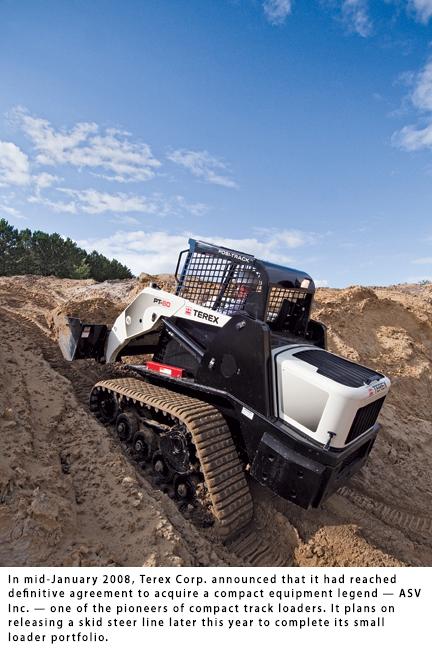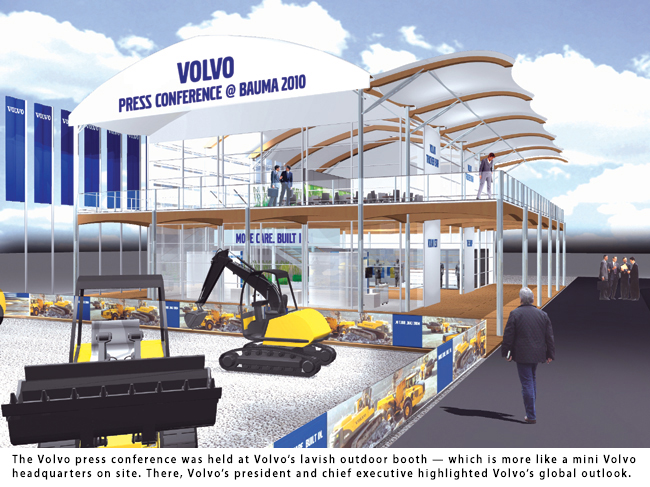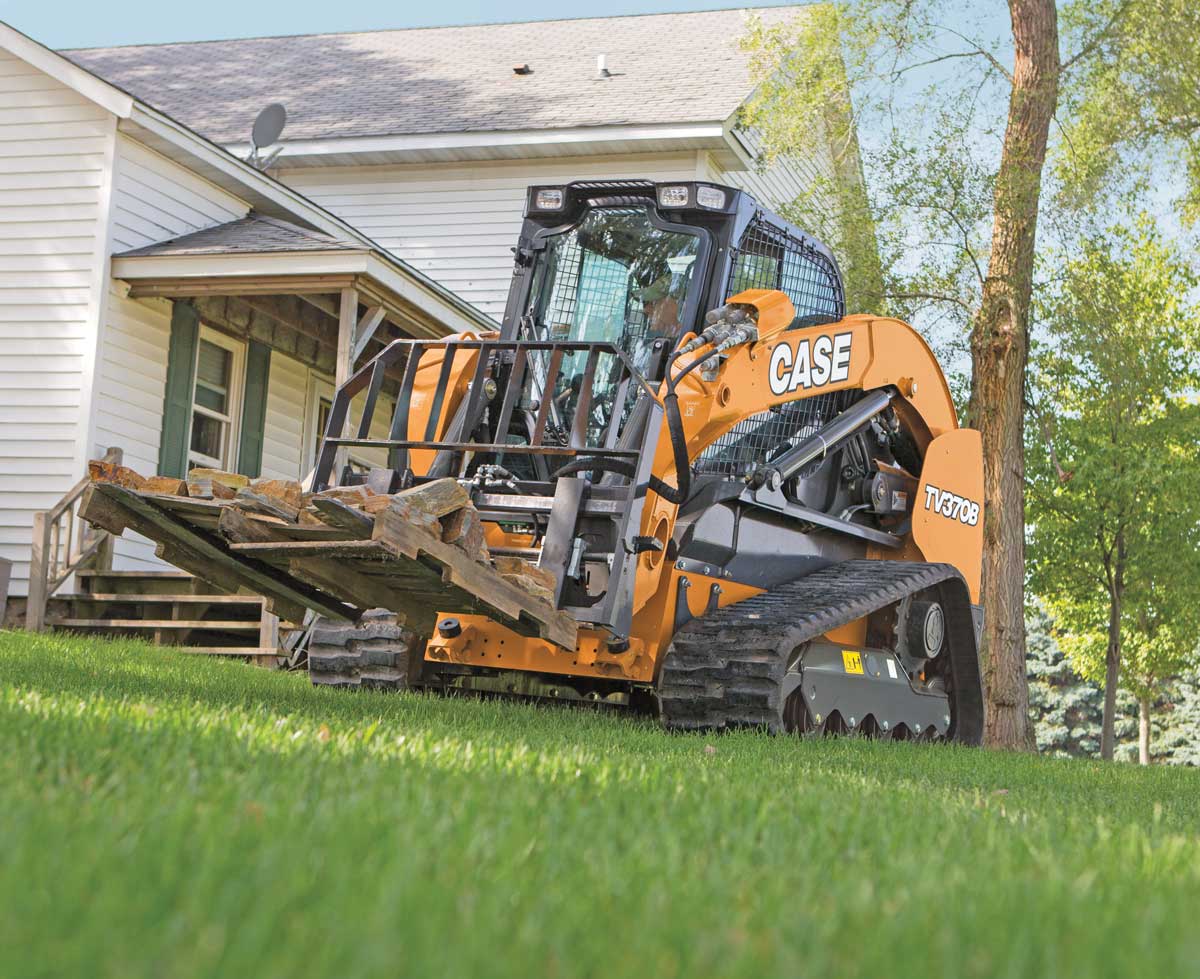Big News at Bauma
After battling volcanic ash, a sea of attendees and my rusty German, Compact Equipment was able to attend Bauma (the international construction equipment show in Munich, Germany, held April 19-25). In fact, because of the erupting Eyjafjallajökull Volcano in Iceland, CE was the only American magazine with editors on the show floor, and we got to hear some very interesting things from global manufacturing magnates like Volvo and Terex (to view our complete coverage, visit www.ceunbound.com).
The Volvo press conference was held at Volvo’s lavish outdoor booth — which is more like a mini Volvo headquarters on site. The CE media crew (and the rest of the foreign press) was ushered into a private second floor room. There, Volvo’s president and chief executive Olof Persson highlighted the tough trading conditions in the industry, which, in 2009, saw the total world market for construction equipment within Volvo CE’s product segments decrease by 39 percent compared to the same period in 2008.
Despite the economic situation, the company continued to defend its market share in most markets and product segments, thanks to a strong dealer network and product range. Persson also noted that the company’s efficiency measures are proving effective. Efforts to shrink dealer inventories were successful, reducing by 47 percent during 2009 to a point where stock is now in balance with demand. The order book has also stabilized.
“Despite the sharp decline in sales, the impact was lessened due to effective cost reducing measures and improved productivity,” said Persson, as the panel of translators processed the info in various languages. “Although sales remain at a low level in several regions, it is becoming clear that the state of the global economy is improving. China in particular has strengthened considerably.”
A main thrust of Volvo CE’s efforts will now focus on improving the overall efficiency of its product range. This initiative embraces increasing fuel efficiency, through new engine technology, hybrid technology, tailored engine/hydraulic/driveline design and improved operator training.
“These measures will see considerable improvements in customer productivity and profitability,” said Persson. “We are also now ready to launch — after over 100,000 hours of testing — our response to the Tier 4 Interim/Stage IIIB engine legislation. We are confident that we can offer market-leading performance and economy of operation in terms of power capacity, engine response and fuel efficiency.”
Terex Takes on New Strategy
Terex is a company that has grown into one of the largest manufacturers of earth moving equipment in the world over the last 10 years, with a corporate approach that favored acquisitions. At this year’s Bauma, Terex noted it had changed that mindset, as well as a few other things. Ron DeFeo, chairman and CEO of Terex, was unable to make the show because of the erupting Eyjafjallajökull Volcano, but he (along with a group of Terex specialists) still spoke to the press corps via speaker phone.

The company discussed many other things — especially its company strategy over the last year and into the future. First off, Terex is a company that had revenues of $8 billion in 2008, and in 2009 that revenue had dropped to $4 billion, half of its peak growth achievements of two years ago. While Terex has grown with acquisitions over the years, (40 since 2002, including the ASV compact track loader line in 2008), it recently slimmed down its subsidiaries, selling off its mid-range Atlas excavators, its power buggies lines and its very profitable mining business (and hey folks, mining is one of the few segments doing well in this economy).
But it is all strategy, said DeFeo via speaker phone. The company is securing cash liquidity with these divestments, structuring the company to be a global niche player in various product segments and restructuring debt. The company has cut costs internally, improving its Terex business system to grow, and in 2010 the company is manufacturing to retail demand, as opposed to manufacturing to unload inventory. The company hopes to double its business by 2013 without acquisitions, said DeFeo.






Comments are closed here.